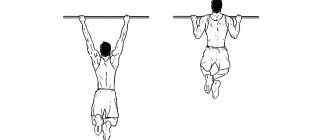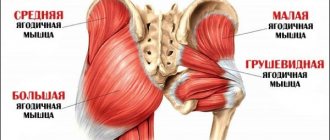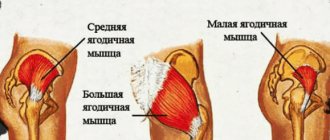Understanding how much you need to exercise in the gym allows you to build an effective workout plan, which will definitely affect your results.
Some athletes believe that training to failure is the best option, so their visit to the gym is delayed by 1.5-2 hours.
Imagine their surprise when they discover colleagues who have achieved the same effect, but study for no more than 1 hour. You can find the “golden mean” only by understanding the physiology of the training process.
A little theory: research on the duration and frequency of training
Frequency and duration are key factors in improving the results of any training. Until recently, athletes believed that one long workout every 7 days on any muscle group gave the greatest effect.
However, recent studies have shown that increasing the number of exercises is more productive, and this is primarily due to the process of muscle protein synthesis.
During training, the muscles are subjected to stress, as a result of which, at the end of training, muscle protein is synthesized most actively.
And here it is worth mentioning the key point, namely the preparedness of the athletes.
The fact is that the period of combining amino acids into protein differs significantly between experienced athletes and beginners. For the former it takes 16-18 hours, but for the latter it can last up to 2 days.
Important! The frequency of training is directly related to the experience of the athlete. For beginners, 1-2 visits to the gym are enough to actively grow muscle mass; trained athletes will find it more difficult to achieve hypertrophy with such a frequency of visits.
As for the duration of the training, it is directly related to changes in hormonal levels during sports. It has been proven that after 45 minutes of intense training, the level of cortisol in the human body increases, which provokes the onset of catabolic processes that destroy muscle tissue. Therefore, trainings that last 40-45 minutes are considered the most productive and safe. The maximum possible time is 1 hour.
Be sure to watch: Lose weight in the gym: the dream or reality of every girl. Training program in the gym for girls. How to use exercise equipment in the gym. Training program for the gym for men: creating an effective set of exercises.
Training diary
And finally, the most important point is keeping a training diary, which is necessary in order to know your working weights, what training should go according to plan and what exercises need to be done. It’s impossible to keep everything in your head, and if you are serious about building your body and generally improving your physical qualities, such as strength, endurance, etc., then you definitely need to keep a training diary, maybe in electronic form, so as not to carry a notebook with you.
In order to achieve the best results and monitor the process of training in the gym, the best option is a combination of all three methods . This will help adjust the training process and monitor changes in appearance.
How often should you go to the gym - the optimal number of times a week to get results?
The frequency of exercise is determined by goals. In most cases they are formulated as:
- weight loss;
- strengthening muscles and endurance;
- muscle building.
Cardio training aimed at burning body fat can be done 3 to 5 times a week, as it is quite easy and does not require much recovery time. Another thing is strength training. It is not recommended to carry it out more than 3 times a week, but it is necessary to ensure that after each load the muscle group “rests” for at least 72 hours.
Important! It is worth taking into account individual characteristics and type of constitution. Thus, in mesomorphs with a high recovery rate and strength sensitivity, muscle mass growth will be faster, while in ectomorphs and endomorphs the recovery process will take longer.
Why is it worth training at least 3 times a week?
The human body is a complex mechanism that constantly works both day and night. Physical activity is a certain stress for him, which means that he begins to work in an extreme situation: somewhere the processes are accelerated, and somewhere, on the contrary, they slow down.
But in any case, such a shake-up is needed. If there is no training or exercise in your life, then the calories will turn into subcutaneous fat and lead to uncontrolled weight gain.
To increase muscle volume and remove excess fat, it is recommended to exercise 3-4 times a week. At the same time, strength and cardio training should be alternated. You cannot combine hard cardio and exercise equipment for pumping muscles on the same day, otherwise there will be no result.
Important! The human body is a complex mechanism, where the inclusion of exercise in everyday life will become a real stress for it.
It is optimal to engage in the following program:
- Day 1: Cardio workout 20 minutes + strength exercises for legs and lower torso.
- Day 2: Cardio for at least 40 minutes, maximum 70 minutes.
- Day 3: cardio 20 minutes + strength exercises for the abs, arms and back.
Each workout should last at least 40-45 minutes until fat begins to burn. It is best to exercise for 60 minutes 3 times a week. This is quite enough to keep yourself in great shape.
Is it possible to train every day?
Until recently, daily training for different muscle groups was considered the norm for many athletes. However, practice has shown that neither muscle tissue nor the nervous system had time to cope with stress. As a result, the productivity of the training process decreased, and the effect of overtraining occurred.
The time required for recovery depends on several indicators:
- athlete experience (a beginner needs more, a professional needs less);
- type of muscles (small ones recover faster, large ones - slower);
- muscle groups (biceps and triceps can be trained more often, legs - less often).
The following recommendations resulted from research and practical experience:
- Beginner athletes – 3 times a week.
- Experienced athletes – from 4 to 5.
At the same time, you should not load the same muscle groups more than 2 times a week.
When does weight loss begin after starting fitness?
With regular training 5 to 6 times a week, the results from fitness will be visible within a week. If you combine physical activity with proper nutrition and reducing calories, you can easily lose 1 kg per week, starting from the first week. But most often, weight loss from fitness goes even faster due to the release of excess fluid and the removal of swelling. Remember that losing weight by 1 kg per week is what you need to strive for so that after losing weight you do not gain weight again.
Best hours for sports: morning, afternoon, evening
Human physiology and vital activity are associated with the phenomenon of circadian rhythms. At its core, these are fluctuations in natural biological processes, for example, body temperature, hormone levels, and blood pressure. Human activity, including motor activity, depends on these indicators.
The answer to the question of when is it better to go to the gym: in the morning or in the evening, is closely related to the type of training. Thus, in the morning hours there is a significant production of cortisol, which is responsible not only for quickly waking up, but also for mobilizing strength during physical activity. The best option for exercise at this time is cardio training. Due to cortisol, metabolism accelerates and energy expenditure increases significantly.
Some athletes prefer to go to the gym in the afternoon. And this is also facilitated by circadian rhythms. During the period from 16.00 to 18.00, most people experience a slight increase in body temperature. As a result, the muscles are warmer, more elastic and prepared for work. At this time, anaerobic exercise will be effective, including due to increased endurance and reduced risk of injury.
In the evening, you should not resort to heavy muscle-building exercises or intense aerobic exercise. This will affect the quality of sleep and disruption of the immune system. Most often, it is at this time that people do relaxing yoga or breathing exercises.
How long should the workout last?
The question of what time is best to go to the gym is related to the question of how long you can exercise. Here it is worth turning again to physiology. During physical activity, the body produces 2 types of steroid hormones: catabolic and anabolic. The first are represented by testosterone, somatotropin and insulin. Their task is to restore muscle fibers and build new muscle tissue cells.
The second group is cortisol and glycogen, which increase blood glucose levels and “stimulate” metabolism. Glycogen, at its core, is a storage facility for glucose; it is found both in the muscles and in the liver. During the first 20 minutes, the body takes it from muscle tissue, and then begins to “extract” it from the liver.
Important! After 40-45 minutes of active training, cortisol levels increase, which in excess is more harmful than beneficial. It reaches its maximum values at 55-60 minutes of training. At the same time, blood pressure begins to rise and immunity deteriorates. Intense production of cortisol for more than 60 minutes has the opposite effect, as muscle tissue begins to break down.
Therefore, sports and medical experts strongly advise not to overtrain and not work in the gym for more than 45-60 minutes.
When to expect results from classes
When starting to play sports, people pursue a specific goal: some want to lose extra pounds, others dream of having a beautiful and sculpted body, and others simply love active activities.
Therefore, each person will have his own individual training program aimed at achieving the goal. Results from classes will appear at different times. For those people who want to lose excess weight, the main attention should be paid to cardio equipment: treadmill, elliptical, exercise bike, stepper and others. It is recommended to exercise for 45-60 minutes. This time is necessary to burn excess calories and lose weight. The optimal number of workouts per week is 5. If you have free time, you can do it every day, in which case it is better to alternate exercise machines so as not to get bored. As an option, exercise 6 days a week on any of the cardio line units and devote another day to swimming in the pool. With strict attendance at classes and proper nutrition, the results of training can be seen in 2-3 weeks. Most likely, the weight will change slightly, but the volumes will decrease.
If a person does not suffer from excess weight, but simply wants to tighten his body and make his muscles more noticeable, strength training will help him. They are recommended to be carried out 2-3 times a week with a break of 24 hours. This is exactly what is needed for muscle recovery. During one workout, you should work on a specific part of the body; you shouldn’t try to do everything at once. Nothing good will come of this. With the right approach to strength training, as well as a balanced diet, you can see the first result in 6-8 weeks. But it is worth noting the fact that muscles develop at different rates. So, the arm muscles will “grow” faster than, for example, the first abs will appear.
It is also worth saying about those who want to simultaneously lose weight and tone their muscles. For such people, the optimal training option is 2 strength training sessions and 2 cardio sets per week. They will be able to see the results in 4-6 weeks. But with the condition of proper nutrition and constant exercise.
By the way, no matter what goal a person pursues when visiting the gym, in order to see his result, it is recommended to weigh himself once a week and take measurements of the abdomen, hips, chest, etc.
How long after the start are results visible?
Sport is not plastic surgery, where immediate results are visible immediately after the operation. The visual results of regular exercise will become noticeable only after 10-12 weeks of training. At the same time, you need to train at least 3 times a week for the results to become noticeable.
If your goal is to lose weight, then it makes sense to alternate cardio with moderate strength training. In the case of gaining muscle mass, it is necessary to draw up a plan taking into account the muscle recovery period, which should not be less than 72 hours.
In both cases, you will need to organize a balanced diet that meets the goals of the exercise.
Why do you need to train 3-4 times a week?
- muscle fibers begin to activate at the neural level after the first session. But the first noticeable results in reducing fat and growing muscle tissue can be seen only after 2-5 weeks, and after 9 weeks of regular training, the body will take on completely different shapes;
- Muscle strength really increases only after 2 months. Relief and increase in muscle mass will occur six months after the first lesson;
- To increase the mitochondrial process in the muscles, which is necessary for burning fat and increasing endurance, you should do at least 6 weeks of cardio training alone.
This is why it is important to exercise 3 times a week. But, again, it is not recommended to load your body with daily loads as it needs time to recover.
What results can you realistically achieve?
Despite the fact that the most obvious results can be summed up only after 3 months, intermediate results can begin to be tracked much earlier.
So, after two days, the body, unprepared for sports, will make itself felt with unpleasant muscle pain. To minimize pain, you must not forget about the warm-up, which reduces the risk of injury for beginner athletes, and the final stretch, aimed at facilitating the process of muscle tissue recovery.
These pain sensations bother you after the first 2-3 sessions, after a couple of weeks, all muscle pain will go away. The main thing is not to stop training during this period.
Physical well-being will improve significantly 4 weeks after starting to visit the gym. It will become easier to get up in the morning, shortness of breath will disappear, muscles will stretch better, and most exercises will be easy to do. During this period, visceral fat, which is located near the internal organs, is burned. After this, the turn will come to the subcutaneous.
After 2 months, the body will gradually begin to change shape, the risk of heart disease will decrease, as well as blood sugar levels, which will significantly reduce the possibility of developing diabetes.
After 3 months, it will be possible to visually evaluate the results achieved. They will be noticeable to others. Muscle relief will appear or improve, and some of the subcutaneous fat will disappear. The silhouette will become slimmer, fitter and more beautiful.
How many times a week do you train?
We invite fitnessists to look at themselves from the outside:
"Elite show-offs"
Usually these are representatives of the stronger sex. Those who like to go to the gym once a week, purely to maintain the image of a person leading a healthy lifestyle. They can buy a subscription for 2-3 weekly visits, but go whenever they want. In the locker room they loudly inform those present about super-busyness and the latest achievements in business. Always dressed in the latest sports fashion. Hung with super expensive baubles and gadgets. In the hall there is more chatter than sweating. In most cases, an elite show-off is also a classic “pancake thief.”
"Snowdrops"
The company that loads themselves with 2 workouts a week is usually motley: “snowdrops” preparing their triceps and abs for the beach season, “daffodils” and “lyalas” with excellent forms and a metabolism from God, getting acquainted with the world of fitness “matches” and “buns” . It includes advanced fitnessists who have been training for many years, whose goal is only to maintain the achieved results, and bodybuilding experts who know the secrets of a slow but confident gain of muscle mass with the help of split programs and sports nutrition.
"Adequate"
The main contingent of fitness fans is sane. To increase muscle volume, he prefers to exercise 3-4 times a week, understand training strategies, know and apply the principles of wave periodization, and select the appropriate sports nutrition option. This allows you to maintain metabolism with an efficiency of 60-90%. However, to achieve 100%, in order to lose weight or work out muscle relief, people plow 5 times a week. But beginners should understand that this figure includes strength and cardio training, while the volume of loads is less than with 3 sessions a day.
"Fans"
Do you have friends who work out 6-7 times a week? You shouldn’t envy, much less follow their example. Physical and psychological dependence on iron or running requires treatment. Here we need the help of colleagues and specialists. Weekends are a must. Sooner or later, overtraining will occur, the mass of skeletal and smooth muscles will begin to decrease, joints will “fly,” and the heart will begin to fail.
Pro Tips
Ekaterina Usmanova, current Russian fitness bikini champion, video blogger
Ekaterina strongly recommends supplementing strength training with cardio blocks, combining everything into interval training, which, while maintaining the proper pace, should not exceed 1 hour.
Denis Borisov, video blogger, author of articles on bodybuilding, one of the creators of the Fit4life.ru project
Denis recommends that beginners who are committed to the process of gaining muscle mass should exercise no more than 3 times a week, for at least 1-1.5 years. In addition, the duration of training, depending on the plan, should vary from 30 to 60 minutes.
Ilya Timko, fitness trainer, creator of the website Tvoytrener.ru
“The more often you train, the shorter the sessions should be,” says Ilya. So, for example, if the training was 2 times a week for 1.30, and then the athlete switched to 4 classes a week, then the training time should be reduced by about 30%, that is, to 60-70 minutes maximum.”
When does muscle mass begin to grow after starting training?
Various factors play a role in the rate of mass gain and overall strength gains, such as the initial level of physical fitness from the start of training, genetics, nutrition, specific training methods, gender and age. All these factors affect the rate at which you gain muscle mass and strength.
In general, men gain between 600g and 1kg of muscle per month; average weight gain is 200 g per week with regular and properly selected training in accordance with the goal. Women gain muscle mass more slowly than men (mainly due to the level of the hormone testosterone), roughly speaking, 2 times slower, which is about 200 g per 2 weeks or 400 g per month.
Main conclusions
The frequency and duration of training directly depends on the physiology of a person and his goals:
- The optimal number of trips to the gym: no more than 3 times for beginners and no more than 5 times for professionals.
- The duration of sports should not exceed 1 hour.
- Daily training is harmful to both the muscular and nervous systems.
- The first results of working on yourself will become noticeable after 10-12 weeks.
The effectiveness of training depends not only on the effort put in, but also on a balanced, well-chosen diet.










